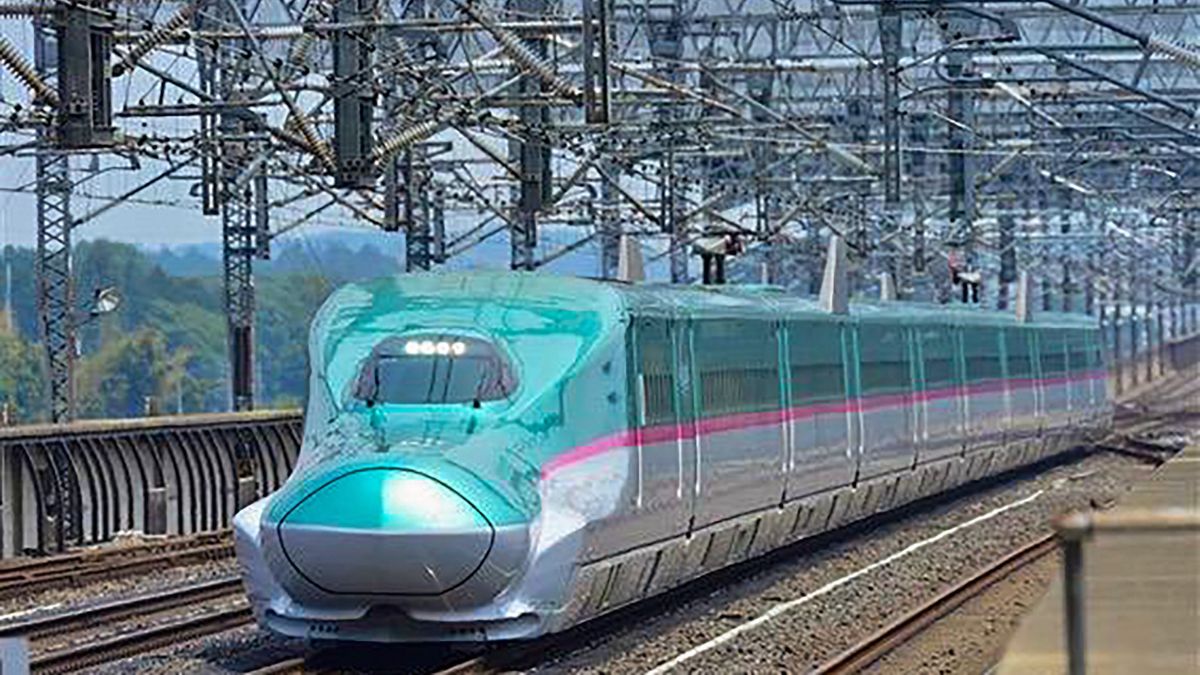India’s first bullet train is finally moving closer to becoming a reality. The Mumbai–Ahmedabad High-Speed Rail Corridor (MAHSR) is set to launch its first operational stretch between Surat and Bilimora by 2027, Railway Minister Ashwini Vaishnaw announced.
The announcement on Saturday came alongside news of a major milestone: the completion of a 5 km tunnel between Ghansoli and Shilphata. The team used the New Austrian Tunnelling Method (NATM) and successfully connected the Savali shaft with the Shilphata tunnel portal.
The minister further assured that the work on the remaining sections is moving at a fast pace and will be completed in the coming years.
Here’s a closer look at this historic bullet train project and what it means for India.
About India’s bullet train project
India’s first bullet train is taking shape on the Mumbai–Ahmedabad High-Speed Rail (MAHSR) corridor, a 508-km route connecting two of the country’s key economic cities.
The project is being developed with support from Japan under the Shinkansen technology transfer program, with at least 10 E10 next-generation bullet trains to be introduced.
Once operational, the train will run at speeds of up to 320 km/h, slashing travel time between Mumbai and Ahmedabad to just over two hours, a dramatic improvement over the current six to seven hours by road or conventional train.
The corridor will feature a 21-km underground section between the Bandra-Kurla Complex (BKC) and Shilphata, including a 7-km stretch beneath Thane Creek.
Railway Minister Ashwini Vaishnaw has emphasised that the bullet train is not just about speed. It is expected to stimulate economic growth along the route, linking 12 towns and cities into a single thriving economic corridor.
“The bullet train brought a sea change in the economy of areas between Osaka and Tokyo after the first bullet train was introduced in Japan, and the same kind of economic development will be seen along the Mumbai–Ahmedabad route,” Vaishnaw was quoted as saying in The New Indian Express report.
He added, “This project will unite Anand, Ahmedabad, Vadodara, Surat, Vapi, and Mumbai into a single economic corridor, creating unified markets and accelerating industrial growth along the route.”
The first phase of the project is expected to launch on the Surat-Bilimora section in 2027, followed by Thane in 2028, and reach the Bandra Kurla Complex in 2029.
The tunnel will be a single-tube structure with a 13.1-metre diameter, designed to accommodate dual rail tracks for up and down bullet trains.
Features of India’s bullet train
India’s bullet train promises a modern, comfortable travel experience. Onboard, passengers will enjoy plush seating, high-quality restrooms, and digital platforms for seamless ticketing.
The stations along the corridor are being designed to international standards, combining functionality, sustainability, and comfort. Passengers can expect calming colour schemes, spacious waiting areas, lounges, kiosks, and clear signage to help navigate easily.
To make longer journeys more comfortable, special attention has been paid to restrooms, seating, and accessibility. Stations will also include nurseries for children and luggage lockers, making day trips convenient for all travellers.
What will be the ticket fare?
Railway Minister Ashwini Vaishnaw has assured that fares will be affordable and aligned with the aspirations of the middle class.
According to reports, a full journey from Mumbai to Ahmedabad on the bullet train is expected to cost between Rs 3,000 and Rs 5,000, depending on seat class and AC options. Shorter trips, like BKC to Thane, are likely to cost less.
What is the progress so far?
The Mumbai–Ahmedabad corridor has already achieved several major milestones. The NATM (New Austrian Tunnelling Method) portion of tunnelling is complete, with the remaining 16 km set to be executed using Tunnel Boring Machines (TBMs).
Construction work has also progressed significantly: 321 km of viaducts and 398 km of pier construction have been completed. Engineers have completed 17 river bridges, nine steel bridges, and installed over four lakh noise barriers along a 206 km stretch.
Track bed work for the same 206 km has been finished, alongside more than 2,000 overhead equipment (OHE) masts installed over 48 km of viaduct.
Meanwhile, loco pilots and maintenance staff are undergoing hands-on training in Japan. Vaishnaw said, “Loco pilots are being trained on advanced simulators to uphold the highest standards of safety and efficiency.”
With input from agencies
)